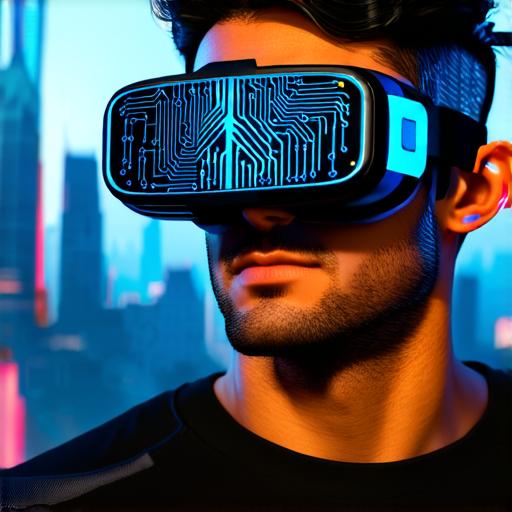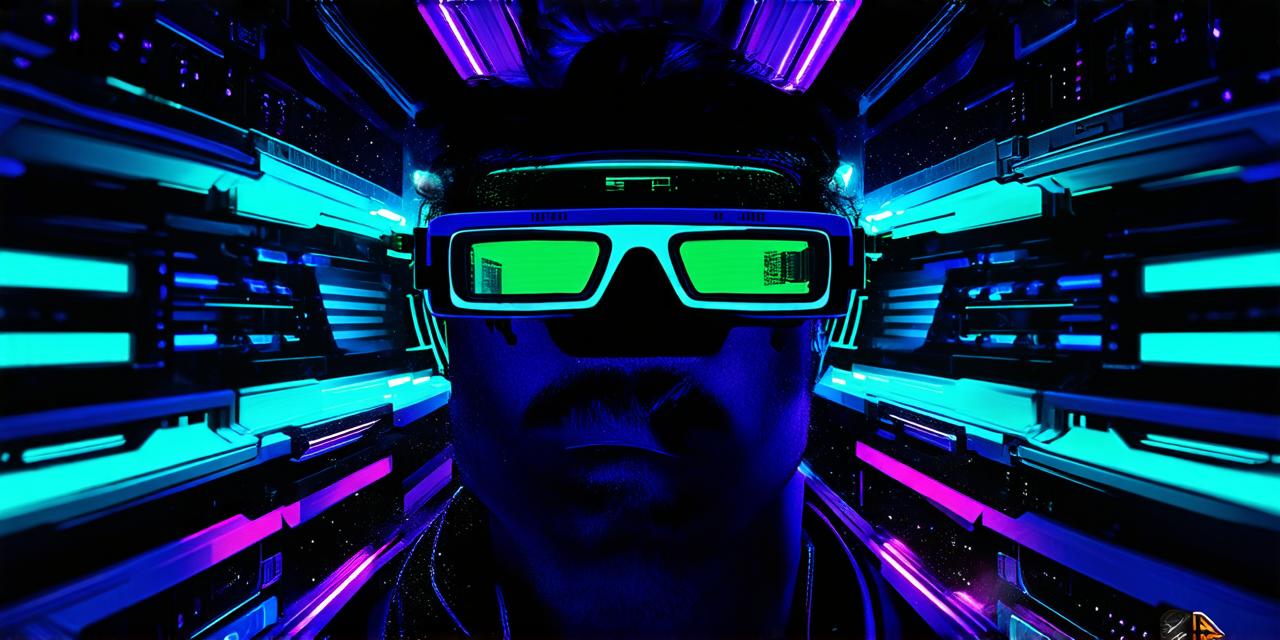Designing VR Glasses
Virtual reality glasses are typically designed with comfort and usability in mind. They often have adjustable straps that allow users to customize the fit and prevent discomfort during extended use. Some VR glasses also include features such as built-in headphones, which reduce noise pollution and enhance the immersive experience.
One of the most important design considerations for VR glasses is field of view (FOV). FOV refers to the range of visual information that a user can see within a virtual environment. A wider FOV allows users to see more of their surroundings, making them feel more immersed in the experience. However, a wider FOV can also cause motion sickness and reduce the overall quality of the image.
Functionality of VR Glasses
Virtual reality glasses typically use two displays, one for each eye, to create stereoscopic images that mimic the way our eyes naturally see the world. These displays are usually positioned at a slightly different angle to simulate depth perception and enhance the sense of immersion.
To track the movement of the user’s head and adjust the image accordingly, VR glasses use sensors such as accelerometers, gyroscopes, and magnetometers. These sensors measure changes in the user’s head position and orientation and translate them into movements within the virtual environment. Some VR glasses also include eye-tracking technology, which allows developers to create more realistic interactions based on where the user is looking.
Limitations of VR Glasses
Despite their many benefits, virtual reality glasses have some limitations that developers should be aware of. One of the main limitations is motion sickness, which can occur when the user’s senses are conflicting or when the image is too fast-paced. Developers can reduce the risk of motion sickness by limiting the refresh rate of the displays and providing options for users to adjust the FOV and other settings.
Another limitation of VR glasses is their limited field of view, which can make it difficult to see all of the action in a virtual environment. Developers can mitigate this issue by designing virtual environments that are optimized for the specific limitations of the VR glasses being used.
Case Studies in Virtual Reality Development
Virtual reality has already been used to create some truly innovative and engaging experiences for users. For example, virtual reality technology was used to create a training program for medical professionals that simulated surgical procedures in a realistic 3D environment. This allowed doctors and nurses to practice their skills in a safe and controlled setting, without the risk of harming real patients.
Another example of virtual reality development is in the gaming industry. Virtual reality games have become increasingly popular in recent years, with developers using the technology to create immersive and interactive experiences that blur the line between game and reality.
Personal Experiences with VR Glasses
As a developer, I have had the opportunity to try out several different virtual reality glasses. One of the most impressive was the Oculus Rift, which has a high resolution display and a wide field of view that provides a truly immersive experience. However, the limited FOV can make it difficult to see everything in the environment, and the motion sickness-inducing refresh rate can be overwhelming at times.
Another VR glasses I have tried are the Samsung Gear VR, which has built-in headphones and a slightly wider field of view than the Oculus Rift. While the built-in headphones reduce noise pollution, the wide FOV can still cause motion sickness in some users.
FAQs about VR Glasses
What are virtual reality glasses?

Virtual reality glasses are devices that allow users to see and interact with virtual objects in a digital environment.
How do virtual reality glasses work?
Virtual reality glasses use two displays, one for each eye, to create stereoscopic images that mimic the way our eyes naturally see the world. Sensors such as accelerometers, gyroscopes, and magnetometers track the user’s head movement and adjust the image accordingly.
What are some limitations of virtual reality glasses?
Motion sickness is a common limitation of VR glasses, especially when the refresh rate is too fast or the field of view is too wide. Virtual environments can also be limiting, as they may not provide enough space for users to move around freely.
Can virtual reality be used for training and education?
Yes, virtual reality has already been used to create training programs for medical professionals and other industries. The technology provides a safe and controlled environment for practicing skills without the risk of harming real patients or customers.
Conclusion
Virtual reality glasses are an exciting new technology that offers developers a unique way to engage users in digital environments. By understanding the design, functionality, and limitations of VR glasses, developers can create more immersive and interactive experiences that will keep users coming back for more. As virtual reality continues to evolve, we can expect to see even more innovative applications and uses for this technology in the future.
